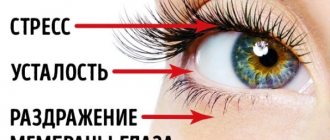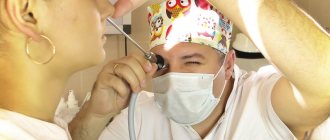Computed tomography is a method of diagnosing internal organs that allows one to obtain layer-by-layer images to detect serious diseases.
CT is a radiation method, which is based on the different absorption of X-ray radiation by tissues. It is the similarity with radiography that makes many patients doubt whether it is harmful to have a computed tomography scan and how often can this study be done? In addition, they are concerned about the need to use a contrast agent when performing bolus-enhanced CT, which may be accompanied by the development of allergic reactions.
Radiation exposure during computed tomography
Everyone knows the fact that in one year it is permissible to expose the human body to only a certain amount of radiation, which does not exceed normal limits. The permissible annual dose of radiation exposure is 150 m3v. If this standard is observed, radiation does not harm human health.
For example, with regular use for the purpose of preventive fluorography, examination of the mammary glands, and an image of the jaw at the dentist, on average, a person receives at least 15 m3v per year. When performing a computed tomography scan on a standard apparatus for examining the brain, the radiation dose ranges from 1 to 2 m3v, and with a CT scan of the pelvic organs, lungs or abdominal cavity - 6-11 m3v.
According to research, even when undergoing a CT scan several times a year, the dose of radiation received, as a rule, does not exceed the permissible norm.
For what diseases is MRI of the brain done with contrast?
Contrast enhancement is used to diagnose the following CNS diseases:
· Tumors of the pituitary gland and tissues surrounding the sella turcica;
· Brain tumors and metastases;
Tumors of the cerebellopontine angle;
· Chronic inflammatory diseases of the nervous system of an autoimmune nature (multiple sclerosis, leukoencephalopathy, leukodystrophy, neuromyelitis optica, concentric sclerosis, etc.);
· Acute cerebrovascular accidents (stroke) of ischemic or hemorrhagic type;
· Vascular diseases of the central nervous system (MRI of cerebral vessels with contrast);
· Detailed study of the structure of already discovered formations;
· Infectious diseases of the central nervous system (encephalitis, meningitis).
In other cases, the use of contrast is not necessary.
The following symptoms are indications for the use of MRI with contrast of the brain:
· Migraines, headaches;
· Convulsions, epileptic seizures;
· Progressive loss of hearing and vision;
· Dizziness;
· Noise in ears;
· Impaired tactile, temperature, pain sensitivity;
· Feeling of goosebumps crawling on the skin.
Is it harmful to have a CT scan with contrast?
Radiation exposure, according to some patients, is not the only danger. To some extent, a radiopaque contrast agent used in some cases for computed tomography can compete with it.
As a rule, it is an inert substance that is not absorbed into surrounding tissues. However, the components included in its composition can cause harm - in some patients they can cause the development of allergic reactions.
This complication may occur in the presence of the following factors:
- hypersensitivity to seafood and iodine;
- renal failure;
- cardiovascular diseases;
- diseases of the gallbladder and liver.
The development of minor side effects is observed in only 1-5% of patients. They experience mild nausea, vomiting, skin reactions, and impaired sense of taste and smell. As a rule, these symptoms do not require special treatment and disappear on their own.
There are isolated cases of the development of side effects of moderate severity: Quincke's edema, acute respiratory failure caused by narrowing of the lumen of the bronchi and sudden involuntary contraction of the muscles of the larynx, shortness of breath. To eliminate such conditions, emergency medical care is required.
In extremely rare cases, severe adverse reactions develop: sudden cardiovascular failure, which can result in loss of consciousness and death. Most often, this harm to CT is caused to allergic patients. In such cases, immediate resuscitation measures are required.
If there is a history of a negative reaction to drugs containing iodine, an antihistamine is administered to the patient before starting a contrast-enhanced computed tomography scan. Some patients require special tests to help identify the allergen.
The development of allergic reactions in patients prone to them occurs in fairly rare cases. Rapid intravenous administration of a contrast agent is accompanied by the occurrence of side effects much less often than slow infusion using a dropper.
How to get an MRI for free
Many clinics today offer MRI. But such a service is paid and costs a lot. Examination of each individual part of the body has its own cost, and you will have to pay separately for the need to administer a contrast agent. The minimum price for a study starts from 3,000 rubles, and can be increased by 4-5 times, depending on the price list of each specific clinic. However, anyone can undergo such examination free of charge if there are certain indications for it.
For example, if you complain of migraines, a neurologist will prescribe an MRI as part of free medical care if other research methods are not informative. Therefore, you should not self-medicate and prescribe expensive procedures to yourself. First, contact your local specialist as part of your compulsory medical insurance policy, and if necessary, you will receive a free referral for an MRI.
Indications and contraindications for CT
Computed tomography allows you to identify the pathological process and clarify the diagnosis in patients with various conditions:
- diagnosed with cancer, metastases, suspected cancer;
- frequent, prolonged headaches without obvious causes;
- cerebrovascular accident and the accompanying consequences of this disorder;
- attacks of seizures, convulsions, loss of consciousness;
- conditions after injuries;
- inflammatory processes localized in various parts of the body.
Computed tomography has undeniable advantages - with the help of this study you can assess the condition of almost any organ. In addition, computed tomography is also used to clarify pathology previously identified during other examinations. This study can only harm patients with the following contraindications:
- syndrome of impairment of all renal functions;
- applied plaster or metal structure in the examined area;
- claustrophobia (fear of closed spaces);
- violent behavior caused by mental disorders.
In addition, the use of CT is contraindicated in patients with excessive body weight exceeding 150 kg, pregnant women (especially in the first three months) and children under 14 years of age (except in cases of extreme necessity).
Grodno University Clinic
Everyone knows that not only the effectiveness of the prescribed treatment depends on the correct diagnosis, but also the favorable outcome itself, or rather, the patient’s recovery. Modern medicine, in order to make an accurate diagnosis of a patient, often resorts to various complex examinations of internal organs and systems, and is not limited to blood tests alone. Today, with the help of ultrasound, you can not only detect tumors, but also find out about the condition of your internal organs. But ultrasound is far from the only way to look inside the human body. There is also magnetic resonance imaging, or MRI. About this examination, about the opportunities it provides, as well as about contraindications and much more - “magnetic resonance” in our publication today.
A tomographic method that is used to study tissues and internal organs using a physical phenomenon such as nuclear magnetic resonance is called magnetic resonance imaging or MRI. This research method is based on measurements of electromagnetic responses from the nucleus of a hydrogen atom, as well as the level of their activity under certain combinations of electromagnetic waves at a constant magnetic field and high voltage.
For those who are familiar with physics, from the above, one thing becomes clear - again the human body is studied using electromagnetic waves and a magnetic field, into which a person is placed, whose body is scanned by radio waves. All indicators and data from such studies go into a special matrix, then into a computer, which processes all this data and produces the result in indicators and pictures.
If we talk about the duration of such a study, then, depending on the scope of the examination, the magnetic resonance imaging session itself can take from twenty minutes to an hour and a half.
As a rule, this examination method is used to diagnose the spinal cord, brain, nervous system, cancer, tumors, neoplasms, as well as a number of other diseases.
As for the cost of such an examination, it is quite high and MRI is performed only as prescribed by a doctor, as well as if there are certain indications.
Not many people know that previously this type of research had a different, more complete name - nuclear magnetic resonance imaging. But, since the prefix “nuclear” was associated in patients with radiation and exposure, it had to be removed from the name. According to science and medicine, in fact, magnetic resonance imaging has nothing in common with radiation rays or even x-rays. Simply, all changes in the molecular composition of organs and systems of the human body are transmitted to the computer screen and make it possible to judge changes in the structure of organs.
Well, everything is clear about how this type of examination is carried out and what it allows to diagnose. But doesn't such interference harm our health?
Despite all the statements that the magnetic field is harmless to the human body, official medicine is still inclined to believe that in order to prescribe an MRI there must be strong indications and it should be carried out exclusively as prescribed by a doctor, who, weighing on one side of the scales - possible harm health that this type of examination can cause, and on the other hand, the benefit of making a correct diagnosis and the importance of an objective picture of the disease, decides whether to prescribe an MRI to his patient or not.
As for those for whom MRI is not recommended, these are pregnant women, patients with pacemakers, defibrillators, ferrimagnetic or other metal implants.
As for relative contraindications, the risk group includes people with insulin pumps, nerve stimulators, implants in the inner ear, prosthetic heart valves, hemostatic clips, patients suffering from heart failure, claustrophobia, and nervous disorders.
Well, if you followed fashion and decorated your body with a harmful tattoo, which was applied using special dyes that included metal compounds, with the exception of titanium, this type of examination is also unsafe for you.
As we see, we are faced with a difficult choice. On the one hand, there is the possibility of conducting a fairly complete type of examination, which will allow us to draw an objective picture of inflammatory processes and neoplasms in various organs of the human body, and, on the other hand, there is still a possible risk to which this type of diagnosis exposes us.
But we cannot say unequivocally whether MRI is harmful to human health or not, if only because each individual case has its own ratio of benefits, harms and risks.
In conclusion, I would like to wish you one thing - be healthy and don’t get sick!
Then, you will not have the need for examinations such as magnetic resonance imaging.
MRI doctor (head) of the MRI room Novitsky Yu.G.
Which is less harmful: CT or MRI?
One of the modern informative diagnostic methods, in addition to CT, is magnetic resonance imaging (MRI). CT and MRI are not considered alternative methods. MRI is used to study organs that have a high fluid content, but are reliably protected by the bone skeleton: the brain and spinal cord, intervertebral discs, joints and pelvic organs. And with the help of CT it is preferable to examine the musculoskeletal system and lung tissue.
Both CT and MRI have almost equivalent information content when studying the genitourinary and digestive systems. However, computed tomography, compared to magnetic resonance imaging, requires much less time to perform, so it is preferred in emergency cases.
In what cases is MRI of the spine indicated?
An examination using a magnetic resonance imaging scanner is prescribed when it is necessary to study in detail the condition of the vertebrae, spinal cord, cartilage and blood circulation along the entire trunk. This situation can arise in several cases:
- there was a spinal injury;
- suffer from chronic headaches;
- curvature of the spine is observed;
- coordination of movements is impaired;
- an infectious lesion of the brain stem was detected;
- there is a herniated disc.
When other diagnostic methods do not provide sufficient information to make a diagnosis, MRI is prescribed. This method allows you to carefully study not only the condition and position of the bones, but also determine their density, detect neoplasms and identify the substance of which they are composed.
Principles of protection
Patients who doubt the safety of radiation diagnostic methods should familiarize themselves with some principles of reducing radiation exposure:
- reduced time period: the duration of screening can be reduced by refusing to perform screening simultaneously in the sagittal and transverse projections, reducing the current strength of the X-ray tube, as well as the number of tomography phases;
- conducting computed tomography through bismuth screens: in this way, it is possible to reduce radiation exposure without compromising the quality of the images;
- increasing the distance: reducing the radiation dose can be achieved by increasing the distance between the X-ray tube and the body of the subject. You can protect other parts of your body that may be exposed to radiation by using lead shielding.
In cases where CT is used in pediatric patients, the use of sedatives is recommended, since immobility of the subject is important to obtain good quality images. For this purpose, you can also use special belts and pillows to ensure the child’s immobility during the examination.
Computed tomography is often the only possible method for diagnosing certain pathologies, for which there is no high-quality alternative, so the question of whether CT scanning is harmful is often inappropriate. This examination is used to confirm complex diagnoses and immediately begin treatment, especially when it comes to preserving the patient’s quality of life. If all recommendations are followed, the patient should not worry that a CT scan will cause irreparable harm to their health.
CT scans of any organs can be done at affordable prices at the Yusupov Hospital in Moscow. The clinic is equipped with a modern tomograph of the latest generation, thanks to which the experienced, highly qualified doctors of the Yusupov Hospital receive high-quality images. Based on the results of computed tomography, doctors create the most effective treatment tactics, individually for each patient.
How the research works
The unknown is always scary. This is one of the main features of the human psyche. That is why it is important for everyone who is preparing to undergo the procedure to know what exactly will happen during the study.
The basis of the tomograph's operation is concentrated on the magnetic field that arises inside the diagnostic ring of the equipment. A powerful magnet is enclosed in the body of the tomograph ring, and when the procedure is started, it begins to rapidly rotate along the guide, making an uncountable number of revolutions around the patient’s body placed inside. As a result, the particles that make up human organs and tissues begin to vibrate at this frequency. This allows you to determine not only the consistency of the substance, but also its density, location and many other parameters that help the doctor see everything that will help make the correct diagnosis.
The advantage of MRI is that there is no need to surgically examine the damaged area of the body. There is no need to give high doses of anesthesia to put the patient to sleep and cut the skin, as well as the top layer of tissue hiding the vertebrae. Clothing also does not matter during the examination. Therefore, the patient can sit on the tomograph table in comfortable clothing.








